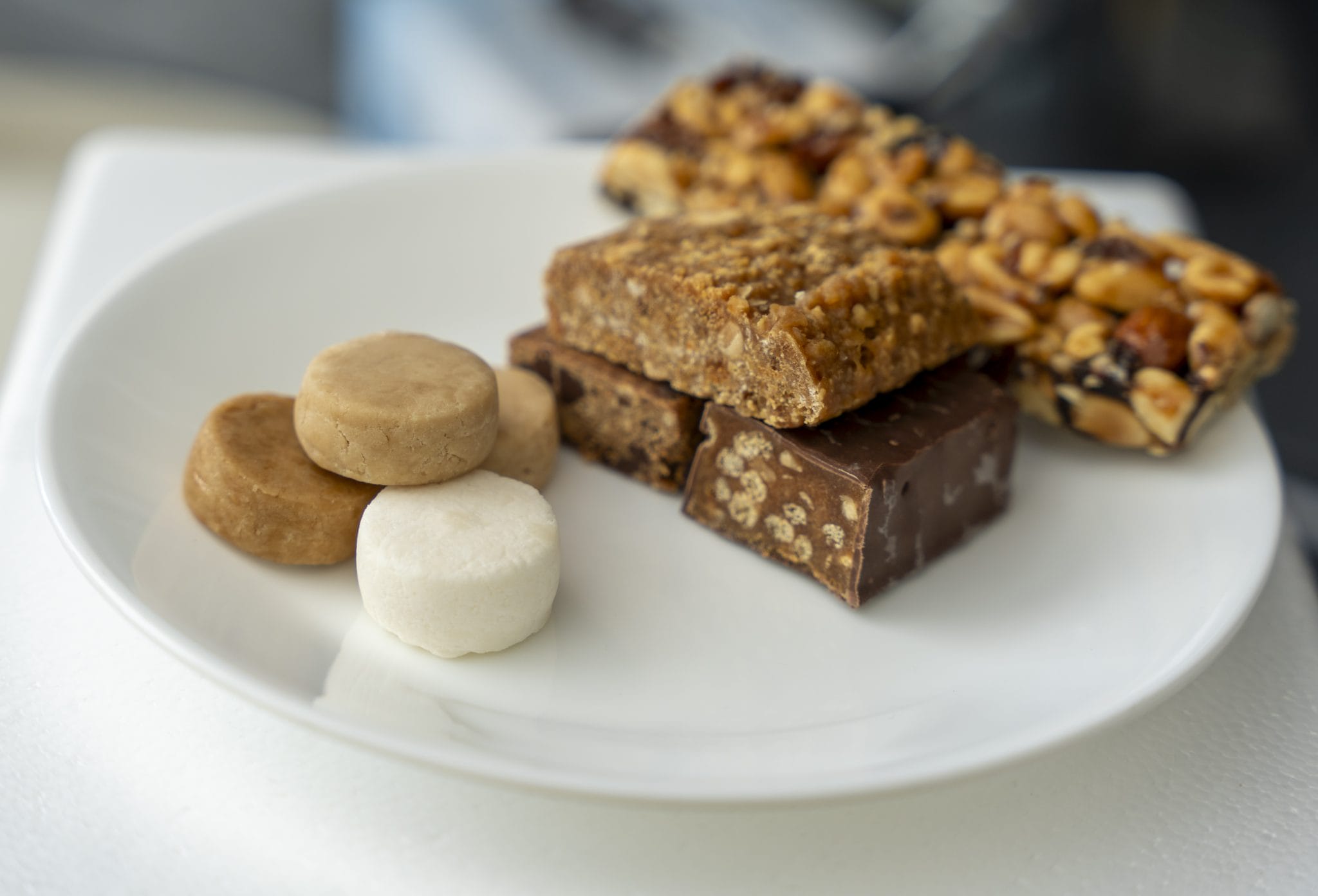Soft, Chewy, Filling: UW Researchers Are Perfecting the Protein Bar
Written by Renata Solan.
From athletes in training to busy people in need of a snack, consumer demand is high for protein-rich, shelf-stable snacks such as protein bars. Retail sales of snack, nutrition, and performance bars topped $8.9 billion in 2023, a figure that is expected to increase over the next few years.
But not all proteins bars have the same shelf life. A hungry student may be relieved to find a forgotten protein bar tucked away in the bottom of their bag, only to discover that it is unpleasantly — or indelibly — hard. Now, biochemists and food scientists at UW–Madison are shedding light on why some types of protein bars can maintain their texture over longer periods of storage, giving them a longer shelf life than others. Their findings were published in the Journal of Food Science.
Protein bars can be made to accommodate a variety of food allergies and dietary needs. Some use proteins from animals such as eggs and whey, while others use proteins from legumes (e.g., soy and peas) or cereal grains (e.g., rice and oats).
“People want access to a variety of proteins for lots of different reasons. It’s nice for consumers to have options,” says Audrey Girard, a professor in the Department of Food Science and lead researcher on the study. “But sometimes it’s also about cost and the supply chain. Take eggs, for example. Right now, the cost of eggs is astronomically high because of the bird flu outbreak. What do we do if we can’t afford or can’t source eggs as ingredients? Having a plant protein that can replace eggs would be really useful.”Still, some proteins harden quicker than others, and differences in plant and animal proteins can impact a protein bar’s texture and shelf life.
There are a slew of biochemical changes that happen during preparation and storage which impact shelf life. Water, which keeps proteins soft and bars chewy, can be released from proteins and then evaporate from the bar. Water can even move from proteins into sugar compounds, resulting in hardened, dehydrated proteins. Reactions between proteins, such as the formation of disulfide bonds or interactions between amino groups and sugars, can cause proteins to bind together and toughen the protein bar. Research also indicates that oils, fats, and proteins can oxidize over time, negatively impacting a protein bar’s texture.
Since most studies exploring protein storability so far have focused on dairy proteins, less is known about the roles biochemical reactions play in proteins derived from legumes and grains.
Girard’s lab collaborated with the Sussman Lab in the Department of Biochemistry to analyze key biochemical reactions in protein bars made from different protein sources, including under-studied plant proteins. The Sussman Lab uses sophisticated, world-class molecular technology to uncover relationships between a protein’s form and its function.
“Human health is closely tied to our food,” says biochemistry professor Michael Sussman. “Opportunities to utilize this kind of technology for applied work in food and agricultural sciences is just as important as that which is more typically performed in the medical sciences, and should be more widely encouraged.”
The team made model protein bars made with pea, rice, or whey proteins, each with 20% protein by weight. The bars were stored in Ziploc bags for one to six weeks before the scientists assessed how each bar fared.


Their findings, obtained using mass spectrometry and other techniques, indicate that the whey and pea protein bars each underwent both protein and lipid oxidation. Rice protein bars, however, did not. Pea and whey proteins were also more prone to aggregating during storage than rice protein. Both oxidation and protein aggregation resulted in harder protein bars. The scientists believe that rice protein may be less susceptible to the chemical changes responsible for protein bar hardening than pea protein and whey because it is less soluble and has more stabilizing disulfide linages. The researchers suggest that adding antioxidants to protein bars may slow the oxidation process and improve storability.
Overall, the researchers hope that their work broadens the spectrum of proteins available for shelf-stable bars. Their studies on protein bars may also have implications beyond protein bar manufacturing, serving as a model for improving the shelf life of other foods, such as baked goods and dried meats or meat replacements.
This research was funded in part by the Wisconsin Alumni Research Foundation (Grant BIR-9512577) and the Susan and Chris Salm Foundation (Grant S10RR13790).
Original article can be found here.
